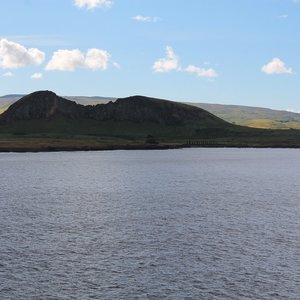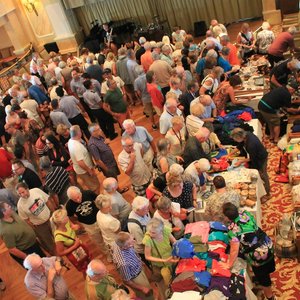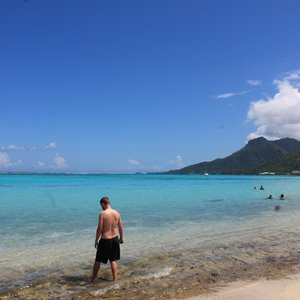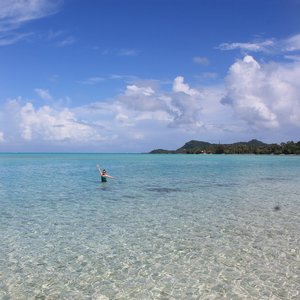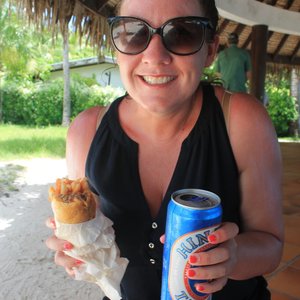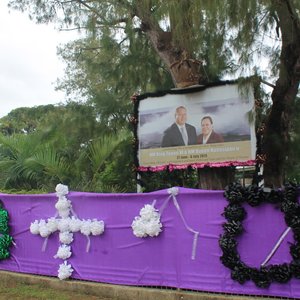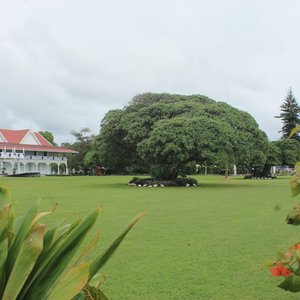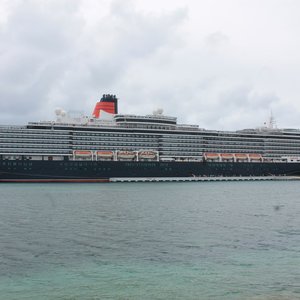Cruise across the Pacific
Although we were sad to say goodbye to Latin America, we were excited to have a break from backpacking and enjoy the open seas.
Prior to embarking on Cunard’s Queen Victoria, we made sure to do some research into the cruise lines alcohol policy. When we originally did our alcohol research for the cruise we only found information that stated you may bring a “reasonable amount” on board. This is a very vague description so we decided that we would test what they mean’t by “reasonable.” Since we had done numerous wine tastings in Argentina and then Chile, we built up a collection of wines to bring aboard. The night before we embarked, Megan logged into our account to look up the itinerary specific to our cruise and to her horror she read that you are only allowed 1 bottle of wine per person. By this point we had amassed 8 bottles and were debating on purchasing a few more. We decided we would attempt to get on with just our 8 and worst case scenario they would take it from us and we would get in back in New Zealand. Luckily, we managed to get through with all our babies and took a celebratory pic on board.
While we knew ahead of time that cruising has a reputation as the travel style for retirees, we did not know that the cruise line we chose, Cunard, is particularly the favorite for the elderly. We had talked to another backpacker in Nicaragua who had traveled via a cruise to get from Portugal to Panama for the same reason we booked ours–roughly the same price as flying. She had mentioned that there was a circle of fellow backpackers on her cruise, so we had hoped to find others on ours as well–not a chance. Without exaggeration, minus the crew and children on board, we were the youngest people on our cruise. As this cruise line is based in the UK the vast majority were British pensioners. I must say they have been a joy to cruise with. The entertainment they unknowingly produce is endless and they often have the most interesting stories to share.
Our cabin was lovely, but was an interior cabin as we obviously couldn’t afford to upgrade. One of the highlights of our day is when we receive the daily program for the next day–exciting stuff to plan out. The most amazing part for us was the fact that the food is endless, literally 24/7, and all included. When we first boarded and went to the lunch buffet we ate like complete animals. I think since we’ve been so focused on our budget, the concept of included unlimited food felt a bit overwhelming. For dinner we had the option to sit at the restaurant and order all the food we want from a 3-course menu. Our table arrangements had us sitting at what must be the best table in the place–the Estrogen Table. We sat with three lovely widows from the UK and the third youngest person on the entire cruise, a woman taking a break from medical school. They were a wealth of knowledge on how to properly cruise. As this cruise actually first started in Southampton and is a World Cruise, all of these ladies had been on well before we embarked. All new people to the cruise are invited to a cocktail hour with the captain. We were informed of all of the tricks to receive drink after drink. One must latch on to a waiter, follow him around and not let him out of your sight. However, we were consistently fed drinks from the staff even before we could finish the one in hand. It was decided by our table that they must have confused us for staff. They also recommended that on the formal nights we avoid the actual ball. It was described by the ladies as a depressing affair, filled with paid men wearing white jackets to take all the sad widows out on the dance floor. We wanted to check it out anyway, and they were entirely correct, however, there was also something beautiful about these paid gents treating the women so well and giving them a night to remember. The first ten days of our journey were sea days and we quickly got used to doing absolutely nothing. Our days were filled with eating, reading, naps, high tea, and the occasional game of Bingo. Megan debated checking out the knitting hour, but the ladies of our table informed her it was best to stay away from the “Stitch and Bitch” Crew.
During those first ten days we did have two island viewing days, with the first being Easter Island. We circled the island and had commentary regarding the history of the island and current information. While it obviously would have been wonderful to actually get on the island and view the Moai close up, it was still really neat to see them from the boat. The second island that we circled was Pitcairn Island. This islands history and current state is completely fascinating. The island is mostly inhabited by descendants of nine Bounty mutineers. After the mutiny the Bounty stopped in Tahiti where the mutineers divided. Some were left behind while the rest took some local Tahitians hostage and sailed on to Pitcairn Island. While the mutineers who stayed in Tahiti were eventually caught by the British, these men essentially got away. However, internally there were many problems with a few of them being murdered in an uprising of the Tahitians they brought with them. In 1856 the entire population of Pitcairn Island moved to Norfolk Island after outgrowing the island however some eventually moved back to form what is current day Pitcairn Island. The current population is 42 people with around 15 more being expats and government employees that live temporarily on the island. While the island is considered a British territory, in modern day the people have more connections to New Zealand. We docked offshore of the island and many of the islanders boarded the ship to sell their goods and also to present talks about themselves and the island. In modern history the island has a dark past, in the 90’s stories of widespread child sex abuse began to surface. Six men were found guilty of various degrees of sex abuse, around 1/3 of the male population. The island had to build a prison to put them in and they were given very light sentences, it was thought that part of the reason for this was because this took away a large portion of the islands workforce.
Our first port was in Papeete, Tahiti. Papeete is a proper city and where the majority of the Tahitian population lives. It’s not particularly beautiful, so we wanted to get out a bit. We didn’t book any excursions because of cost, so we decided to take a ferry across to the beautiful island of Mo’orea. From here we headed to a public beach that was just stunning. Everything in Tahiti is incredibly expensive and the day cost us around 60 USD. Besides a bottle of water this entire cost was transportation. We chose not to eat anything until we were back on the ship in the evening.
The very next day we arrived in Bora Bora. Just hearing “Bora Bora” makes one thing of pure luxury. Again we chose not to book any excursions and instead headed to the only public beach on the main island: Matira Beach. Basically the entire island is one resort after another. However, the beach we went to looks like it belongs on a postcard. The water is crystal clear and you can walk out forever as the beach is sheltered by a reef that’s pretty far out. We went to a little corner store to grab some beer and Megan had a local delicacy, a baguette (French Polynesia) filled with greasy ground beef, fries, and slightly sweet ketchup like sauce–amazing.
Our last port before heading to Auckland was Tonga. Upon sailing into the harbor at Nukuʻalofa we were struck by just how flat the island is. Compared to our other ports and the numerous islands we sailed past, Tonga appeared to be flatter than a pancake with the highest point being just 65m. We couldn’t help but to imagine the impact that global warming or even a small tsunami could have on it. We spent the morning walking around the town and viewing the Palace. Tonga’s Queen mother had recently past before we arrived so the entire country was still observing 10 days of mourning. Many people wore black and the entire place was bathed in black and purple ribbons. We could only view the Palace from afar because they still had traditional ceremonies for the Queen mother that were not open to the public. Compared to Papeete/Mo’orea and Bora Bora, Tonga is a bit more rustic. There are no large fancy resorts and tourism is not nearly as developed. We visited some blowholes on the Western side of the island and then stopped at a nearby beach for some R&R.













